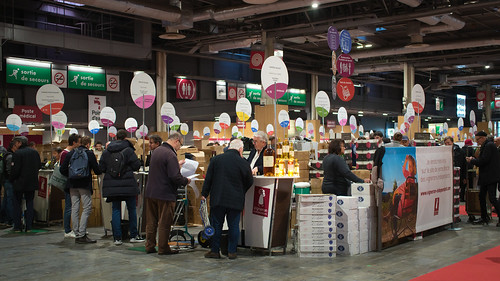What started all this looking into Sony color grading recipes is that the Fujifilm Folks and Hasselblad Haulers seemed to be having a LOT more fun than the rest of us. They claimed to have colors and recipes that were easily available to them that couldn't be duplicated.
Such is the power of marketing, or so said my Little Internal Voice of Skepticism. I was determined to find a way to configure Sony in-camera jpg processing tools that met or exceeded the "filmic looks" of the well heeled "influencer in-crowd."
I've already proved to myself that Sony Picture Profiles could be used for stills and could compete head to head with Fujifilm "Film Simulations." I also proved to myself that Hasselblad's "Natural Colors" could be had with a specific Picture Profile recipe. All that was "missing" from my list of color-grading desires was easier in-camera contrast control, auto-exposure bracketing, and silent shutter support.
I took a look at Sony "Creative Styles" to see if there were any useful styles. There are two, in fact. I'll cover "Deep" here and "Light" in a future post.
It's too easy. I can't believe it. "Deep" matches Hasselblad Phocus color-grading at the 3FR format file to FFF demosaic step in the following first recipe. The second recipe posted here matches the color-grading at the 3FR to FFF demosaic step with a Hasselblad "Nature" preset enabled.

Sony "Natural Colors Nature" recipe
Sony "Natural Colors" Creative Style base recipe ~
Creative Style ~
Deep
-1 Contrast
-1 Saturation
0 Sharpness
White Balance ~
C Temp./Filter ~ AWB
A:B: A1
G-M: M1
Exposure Value ~
variable depending on overall scene brightness, but usually simply 0EV
--------------------------- recipe # 2 --------------------------------
Sony "Natural Colors Nature" Creative Style recipe ~
Creative Style ~
Deep
0 Contrast
0 Saturation
0 Sharpness
White Balance ~
C Temp./Filter ~ AWB
A:B: A1
G-M: M1
Exposure Value ~
variable depending on overall scene brightness, but usually simply 0EV
-------------------- Comments ----------------------
I feel it might be helpful to describe what I've learned and how I've gotten to this so that others can quickly/easily sort this out for themselves if so inclined.
First, I loaded Hasselblad's Phocus software to understand how it manages colors. It turns out to be a rather simple piece of software and the "magic" of 'blad "Natural Colors" is in the tone curve and gently soft color palette. The tone curve is set for deeper/richer tones than, say, other camera manufacturer's "Standard." The color palette is subtly de-saturated.
Second, Hasselblad's Phocus "Nature" setting claims to use a "Standard RGB" curve modification. Except the curves function is not "Standard RGB." They've actually implemented something called "Weighted Standard RGB." This prevents the colors from distorting as badly as the real "Standard RGB" algorithm, and gives a gentler increase in color contrast as luminosity contrast increases.
Next, I found that <RentWare> Standard camera profiles implement the same thing Hasselblad's Phocus software does. This was a pleasant surprise. It's a very simple exercise, then, to use <RentWare> Standard .dcp files in RawTherapee. Voila! I instantly have Hasselblad's ultra-magic "color science" [snark] on any camera I chose to use.
Note: <RentWare> Standard camera profile is in a separate directory from manufacturer/model specific .../Camera/Standard. They are _not_ the same thing.
Coming to Sony in-camera jpg processing, I made a Picture Profile recipe that matches Hasselblad "Natural Colors" and <RentWare> Standard, but with a few camera-imposed limitations. Looking a just bit further, I discovered that Sony's "Creative Style Deep" does an excellent job of matching Hasselblad/<RentWare> as well.
Bottom line -
Sony "Creative Style Deep" = Sony Picture Profile "Natural Colors" = <Rentware> Standard camera profile = Hasselblad Phocus "Natural Colors"
Limitations ~
Sony Creative Style Deep is not available on my NEX-5T, nor on my A5000. But it does come on the early NEX-7, A6000, A6300, and A7 cameras up through current models.
-------------------- Additional Information ----------------------
Sony Creative Style ~ basic knowledge
RawTherapee "Natural Color" RAW processing recipe
Sony Picture Profile "Natural Color" in-camera jpg recipe

























